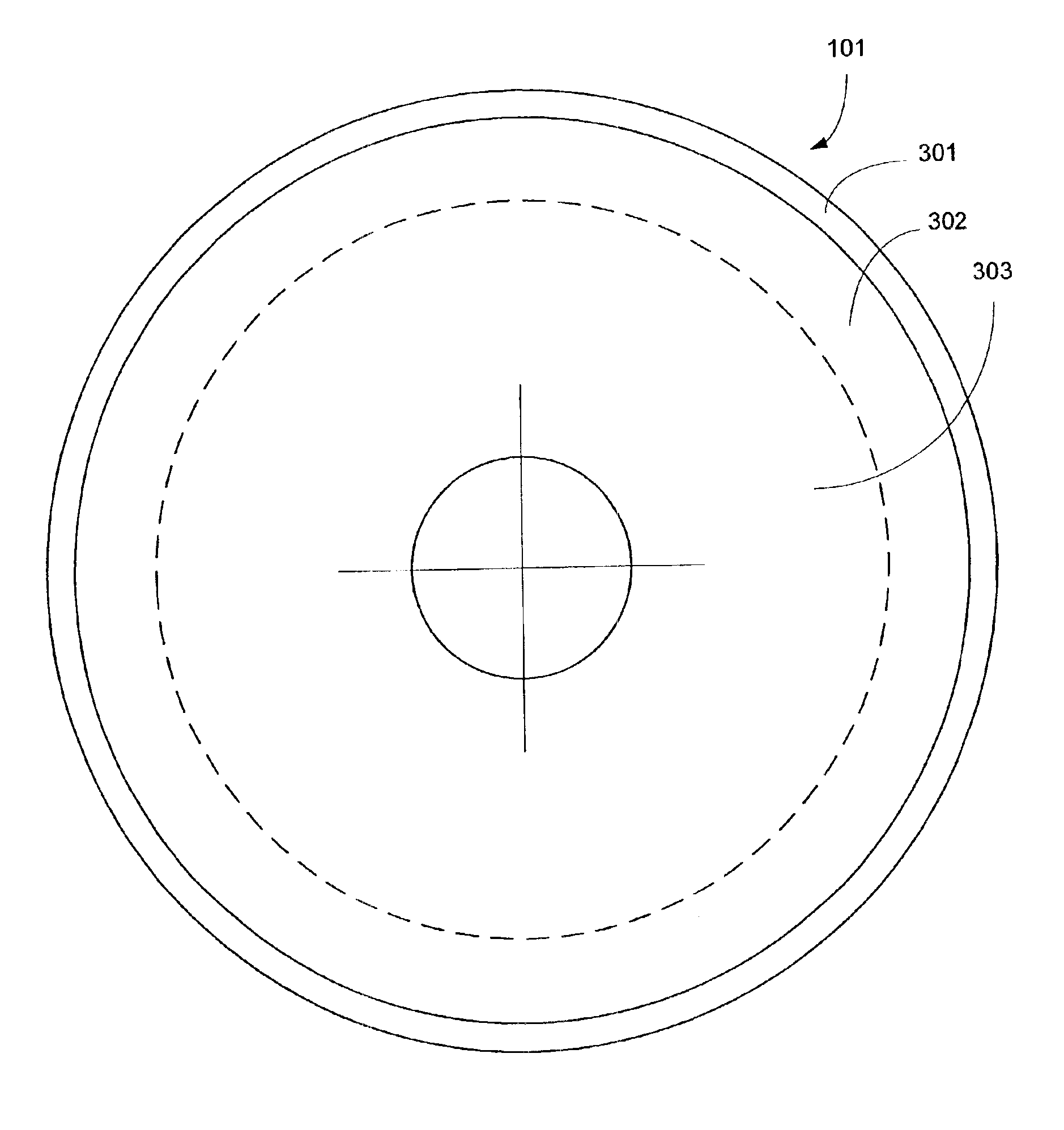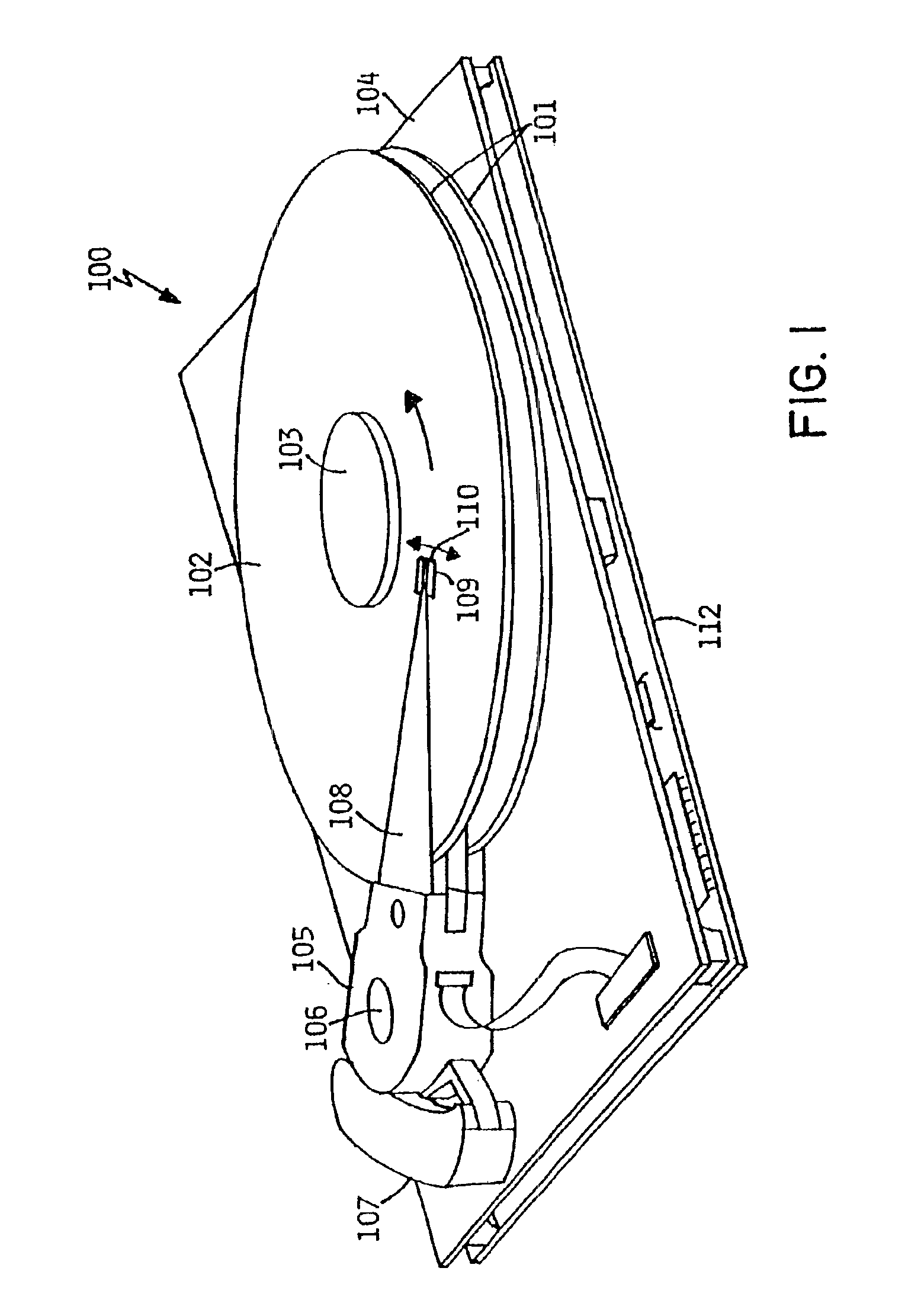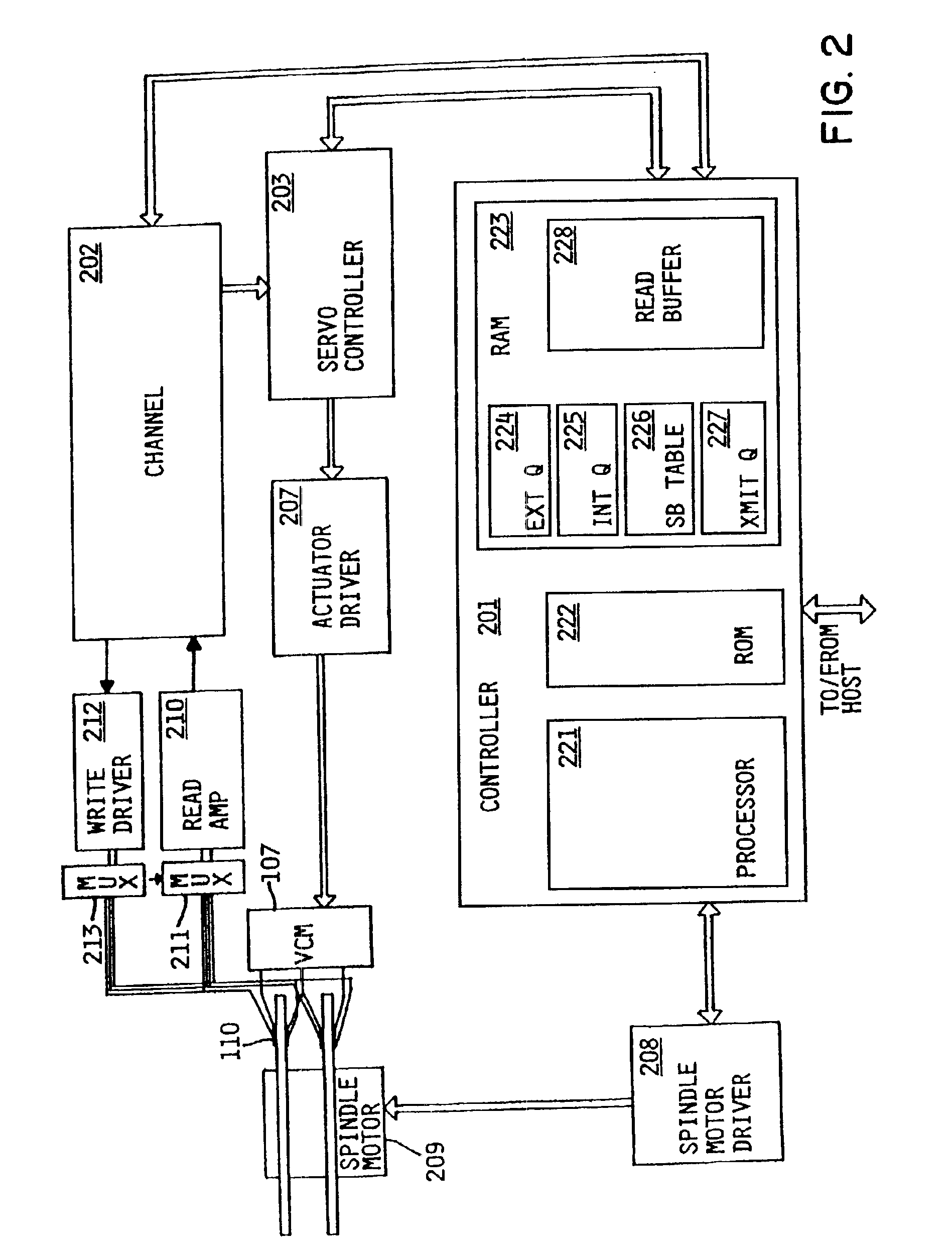Method and apparatus for servicing mixed block size data access operations in a disk drive data storage device
a data storage device and disk drive technology, applied in the direction of digital recording, record information storage, instruments, etc., can solve the problems of large data storage device capacity, block size of data transfer, and large data storage needs of modern computer systems
- Summary
- Abstract
- Description
- Claims
- Application Information
AI Technical Summary
Benefits of technology
Problems solved by technology
Method used
Image
Examples
Embodiment Construction
Overview of Disk Drive Design
[0021]A rotating rigid magnetic disk drive typically contains one or more smooth, flat disks which are permanently attached to a common spindle or hub. Where more than one disk is used, the disks are stacked on the spindle parallel to each other and spaced apart so that they do not touch. The disks and spindle are rotated in unison at a constant speed by a spindle motor.
[0022]The spindle motor is typically a brushless DC motor having a multi-phase electromagnetic stator and a permanent magnet rotor. The different phases of the stator are sequentially driven with a drive current to rotate the rotor.
[0023]Each disk is formed of a solid disk-shaped base or substrate, having a hole in the center for the spindle. The substrate is commonly aluminum, although glass, ceramic, plastic or other materials are possible. The substrate is coated with a thin layer of magnetizable material, and may additionally be coated with a protective layer.
[0024]Data is recorded on...
PUM
 Login to View More
Login to View More Abstract
Description
Claims
Application Information
 Login to View More
Login to View More - R&D
- Intellectual Property
- Life Sciences
- Materials
- Tech Scout
- Unparalleled Data Quality
- Higher Quality Content
- 60% Fewer Hallucinations
Browse by: Latest US Patents, China's latest patents, Technical Efficacy Thesaurus, Application Domain, Technology Topic, Popular Technical Reports.
© 2025 PatSnap. All rights reserved.Legal|Privacy policy|Modern Slavery Act Transparency Statement|Sitemap|About US| Contact US: help@patsnap.com



